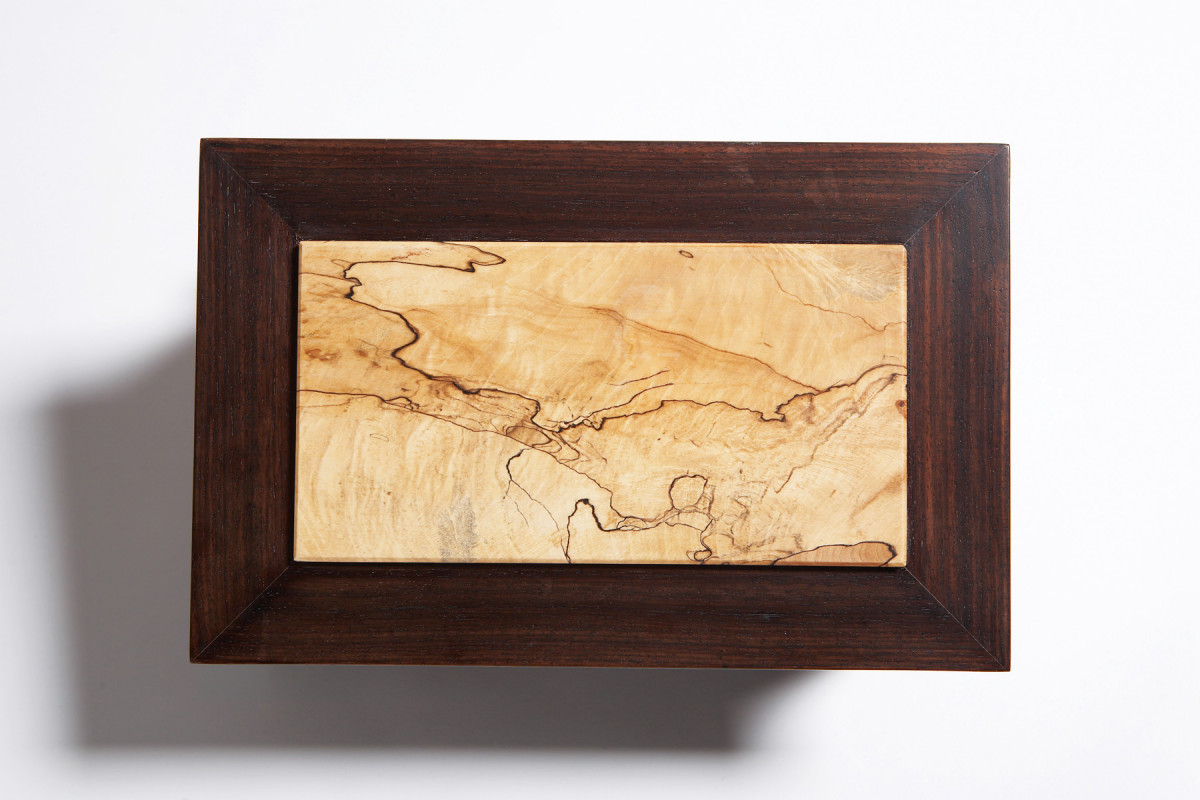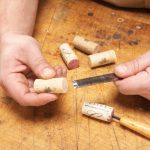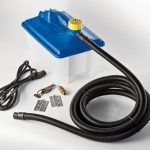We may receive a commission when you use our affiliate links. However, this does not impact our recommendations.

What makes this wood so special? Fungus.
If there’s one wood that can really challenge your sense of design—and your woodworking skills—it’s spalted maple. Those inky black lines can both delight the eye and drive you crazy.
Spalted maple is just ordinary maple that’s partly rotten. After the wood is cut, different colonies of stain, mold and decay fungi attack it and establish boundaries to preserve their turf. That’s what those black lines are—borders between warring tribes. They don’t follow any regular pattern, such as the tree’s growth rings. Their abstract nature teases the eye, drawing you in and making the wood fascinating to look at.
Those lines can change in unpredictable ways inside the wood. You may have the perfect pattern picked out on a board, only to have it change drastically—or disappear—with one pass through the planer. Working spalted maple is like carefully excavating an archaeological site: You have to know when to stop digging.
The fungi colonies may also alter the color of the wood they’re feasting on. Some areas might remain light, while others turn a deeper shade of yellow. Add maple’s natural figure to the mix and you’ve got an awful lot going on in one board.
Problems to look for
Ordinary maple starts turning into spalted maple when its moisture content (MC) is still fairly high. When the MC drops, the fungi die off. The trick to drying the wood for use in furnituremaking is to stop the rotting process at just the right time.
This doesn’t always work out, though. Within one board, you may find sound, hard wood with excellent working properties and soft, punky wood that you can’t work at all. Sometimes, the soft spots have the consistency of popcorn—those are areas where the fungal attack has gone too far. Plan on giving every board the “fingernail test.” If you can do serious damage with your fingernail within one of the tribal zones, cut out that section.
You may also find pockets of grayish black dust. It’s OK to leave them in your finished piece if you don’t mind the way they look. The problem with the dust is that it can spread when you sand. It will work its way into the wood’s pores and end up looking like dirt smudges. The solution is to harden the dusty spots prior to sanding by dripping some CA glue on them. Use the thin glue, not gel. It soaks in very quickly.
If you encounter empty pockets without dust, fill in the holes with epoxy mixed with black tempera powder. It’s an easy, permanent fix, and visually blends in with the other black areas.
How to buy it
Most cabinet shops don’t want to deal with wood that varies so much from board to board, so spalted maple isn’t normally carried by lumberyards. You’ll have to do some digging to find it, but just about any operator of a small sawmill can steer you to the right supplier. Some wood dealers will induce spalting on purpose, but others may be sitting on a “bad” batch of lumber that you’ll think is gold.
While you can order spalted maple online, it’s hard to predict exactly what you’re going to get. It’s safer to see boards in person, but even then, you’ve got to be careful. Remember, this isn’t wood that has been dried in the normal way, so be alert for checks, cracks and of course, that punky stuff.
Spalted maple will try your patience and demand your full attention. You need to “ask” rather than “tell” each board how it would like to be used. So slow down, way down, pay attention, and get to know each piece intimately. The rewards are worth it.
Here are some supplies and tools we find essential in our everyday work around the shop. We may receive a commission from sales referred by our links; however, we have carefully selected these products for their usefulness and quality.









